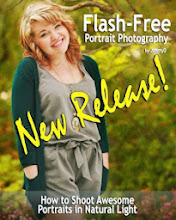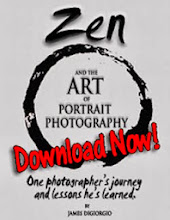With high-end, video-capable dSLRs being in so many photographers' bags these days, many of them -- those that make all or part of their incomes with cameras -- have added video production to their menus of services offered. Others, I'll call them "serious hobbyists," have been lured to various types of film-making by the many high-quality videos they've seen on the web; videos that were shot with the very same cameras (or very similar cameras) those serious hobbyists already own. In the entire history of film-making, never has such high quality motion picture acquisition been within such easy grasp of so many would-be film-makers and others taking advantage of current video technologies for a variety of purposes.
It's not just about capturing motion pictures with those cameras. Digital, non-linear, editing systems have also become commonplace on many folks' personal computers. Between the cameras and the editing software, anyone might become an accomplished film-maker. At least, that's how a lot of folks have it figured and, frankly, they're not wrong. So many of the traditional obstacles to producing exceptional video projects have been rendered moot by the digital revolution.
I'm a guy who, beyond being a working photographer for a very long time, has also been a working videographer for nearly as long. When dSLRs arrived on the scene, making the transition from film to digital was quite easy for me. I'd already made the transition from analog to digital video, (Via dedicated digital video-cams.) Many aspects, i.e., the technical stuff, of shooting stills with dSLRs were either the same or very similar as with digital video. dSLRs, from an operational point-of-view, made perfect sense to me from the git-go and, because of that, my transition was painless and nearly seamless.
As most everyone knows, the digital revolution has meant an exponential increase in the number of photographers pursuing some level of pro status. Now, with the advent of video-capable dSLRs, the same holds true for video production. Since I'm a person whose work/career experience includes nearly equal amounts of photography and videography, a significant chunk of it in the digital realms, I believe I might have some relevant advice to share with all you new-to-video photographers. In fact, I've already invested some time outlining an eBook I'll begin writing in the near future. (As soon as I finish authoring my next photography eBook that I'm currently working on.) My video production eBook's working title is: "Guerrilla Video for Photographers."
But for now, here's a few generic tips for digital photographers transitioning to dSLR video production. Some of it is similar to the advice I've given to many photographers, some of it is quite different:
1. Don't Get Caught Up in the Gear Wars: Resist focusing on technology over craft. Craft will nearly always yield the best, most memorable results. Sure, knowing how to take advantage of available technologies is important. But learning the craft nearly always trumps the technical stuff. Also, you don't need every piece of accessory gear manufacturers are working hard to make you believe you need in order to shoot engaging video. In fact, you might be surprised at how little of it you may need to produce really good and engaging video. You already have the primary piece of gear you need: your video-capable dSLR. Learn how to operate it with competence, ease, and agility before deciding you need all that (often expensive) accessory gear.
2. You'll Learn More About Shooting Video While Editing Than When Shooting: Video post-production and editing is where your projects come together, that is, it's where they're put together and assembled in some meaningful way. What you did right and, often more importantly, what you did wrong while shooting suddenly becomes painfully obvious in post. Take careful note of your production mistakes while editing and reduce the odds of repeating those mistakes in future productions. Avoid, whenever possible, the "fix it in post" mentality. Ultimately, it will save you a lot of time and many headaches.
3. Be Mindful of the Laws of Diminishing Returns: If time and resources are things you can easily afford to spend, by all means spend the time and resources to get those difficult but awesome shots even if they only represent a few seconds of screen time in your finished production. But if time and resources are luxury items you don't have to spend, consider carefully if that really cool shot, one that may take hours to get right during a very limited production schedule, is worth the few seconds of screen time it may only end up being in your finished production.
4. Practice, Practice, Practice: Don't try to learn to effectively shoot your dSLR during productions that matter. Take it out and practice with it. Practice with it often. Practice and learn to pan and tilt and more with ease and agility whether you're doing so with a hand-held camera, one that's attached to some sort of rig, or mounted on a tripod or other stable base. The big difference between shooting stills and shooting video should be obvious: Motion. To paraphrase a famous photographer whose name I can't recall at the moment, still photography is about capturing motion with stillness. Motion picture photography is about capturing motion with motion. That's a very big difference!
5. Learn the Craft of Film-Making: The advent of digital video hasn't changed the fundamental craft of film-making to any great extent. Many things or ways of doing things are no different now than they were 50 or more years ago. Sure, some things have been made much easier to accomplish simply due to the smaller sizes of cameras which produce incredible results. But none of that matters in terms of the basics, the basics of the craft, that is. Learn the basics. Invest time in learning. If you're going to be a good videographer, it's going to take as much, probably more learning than you needed to engage in in order to increase your skills as a photographer. Many books and other resources, even those from years ago, are as relevant and helpful today as when they were written or produced, even if it was many years before video capable dSLRs arrived on the scene.














